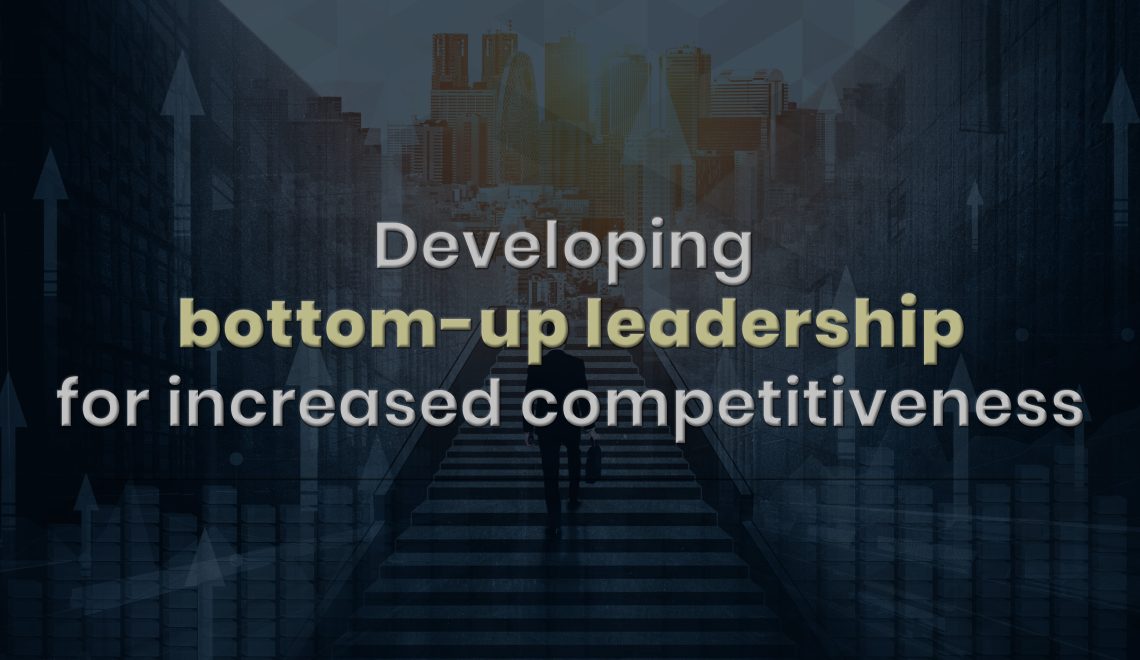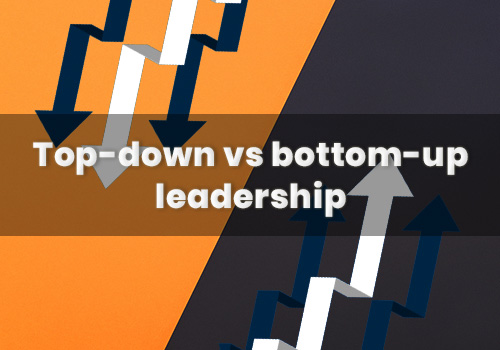
A bottom-up leadership approach entails giving teams more autonomy. As a result, people learn new skills, take ownership of their projects and become more creative and innovative.
Building bottom up leadership is a process that begins at the ground level. It is about empowering people and trusting them to take ownership of their work. Furthermore, it is about supporting people to develop their skills, knowledge, and abilities. It involves creating an environment where people are willing to take risks and mistakes are seen as opportunities to learn.
Trust and empowerment are at the heart of the bottom-up approach, which is done in a variety of ways.
- Empowering people to make decisions
- Motivating people to take ownership of their tasks
- Providing team members with resources
- Creating growth opportunities
- Establishing a culture where it’s safe to fail
A bottom-up leader identifies the team’s needs and devises strategies accordingly. They are not afraid to take risks to shape the company culture differently or implement drastic restructuring in the hierarchy. This leadership style is beneficial for both employees and the company as it fosters a more collaborative environment that encourages people to share their ideas without fear.
Types of leadership styles
A strong and well-defined leadership style is essential for providing clarity and motivation for a business and ensuring that the goals are achieved in a time bound manner. Leadership behaviour is usually displayed in the 4 framework approach human resource, structural, symbolic, and political. Based on this, some of the common leadership styles are democratic, autocratic, transformational, and laissez-faire. Every organization needs to understand the current leadership style, evaluate its effectiveness against the defined goals and objectives, and if required realign the leadership style to ensure overall organizational effectiveness.
Why should organizations focus on developing bottom-up leadership?
Among the various models of leadership, bottom-up leadership plays a significant role in improving the work culture of an organization where employees make decisions without waiting for approval from the higher-ups in the organizational hierarchy.
Modern organizations are displaying a tendency to shift away from traditional organizational structures to flatter organizational structures because of the various pros of bottom-up management strategy. In modern business organizations, the roles of employees and managers are becoming more fluid as organizations are adopting flatter structures. For example, the traditional view of managers as bosses is being challenged by new ideas about leadership, such as mentorship.
Further, flat organizational structures impact employee empowerment greatly, as they foster a feeling of autonomy and prepare them to take on more responsibilities, which in turn motivates them to give their best.
In order for employees to excel in their careers, they must receive continuous support from their managers. It is the manager’s duty to provide feedback and set deadlines to ensure that employees know what they should be doing, how they should be doing it, and when they should be doing it.
Moreover, bottom-up leadership practices believe in maximizing the potential of all members of the organization and involve collaboration rather than a hierarchy to foster innovation at all levels. Getting people to take charge of their own work will lead to them being more fulfilled and happier at work. Bottom-up management can be seen as an alternative to top-down management, in which decision-making happens only at the top.
I believe that it is crucial that people at the lower levels get a voice and get recognized. It will make them connect their role with the growth of the organization. It is not necessary to always have flawless ideas. Nonetheless, the work environment should encourage everyone to express their ideas, even the wrong ones. People should be able to freely express their ideas without fear of judgment or ridicule. In turn, this will stimulate their creativity and lead them to find solutions that benefit everyone.
We should encourage employees to brainstorm in the workplace. From the bottom, there will be better ideas, different groups of people will be involved, and people will feel more engaged in their work. The bottom of the pyramid represents a group of people who are more involved in the nitty-gritty of the work and have real-world exposure to the various challenges. So, they will be in a position to contribute unique and better ideas to the business.
Top-down vs bottom-up leadership

Companies with hierarchical management structures usually reject ideas from the bottom. A top-down leadership approach is more prevalent in such organizations. A lack of trust in lower-level employees or an insufficient understanding of their work may be the reason for this approach. In such rigid structures, there is often a sense of frustration among employees about the lack of innovation and creativity at their companies. Employees may feel like they are being held back from achieving their full potential in a top-down leadership model and this results in disengagement, low motivation at work, higher attrition levels, and poor productivity.
In recent years, companies have begun to find ways to combat these feelings by accepting ideas from the bottom up. Here, employees are encouraged to submit ideas for change or improvement in any area of the company, from the smallest to the largest. As a result of this approach, employee engagement and motivation have increased because they connect better to the team and the organization’s vision.

Wrapping it up – Why is bottom-up better than top-down leadership?
Bottom-up leadership can be defined as empowering those who are closest to the work to assume responsibility for its success. The process gives greater autonomy and room for creativity. In this organizational structure, the manager does not have to be in charge of everything that takes place within the company. They just need to be able to manage people well and provide them with the necessary tools to become more efficient.
What is the four 4 framework approach?
This approach proposes that leaders view organizational experiences based on their style. The four frames are human resources, structural, symbolic, and political.
What is bottom up leadership?
Bottom-up leadership encourages corporate decision-making from the bottom rather than from the top of the hierarchy.
What are the five models of leadership?
The five common leadership models are delegative leadership, transformational leadership, authoritative leadership, participative leadership, and transactional leadership.
Who created the 4 I’s of transformational leadership?
The 4 I’s of transformational leadership was described in 1985 by Bernard A. Bass.
What is a transactional and transformational leader?
A transactional leader focuses on processes and control while a transformational leader focuses on inspiring the team to follow.



